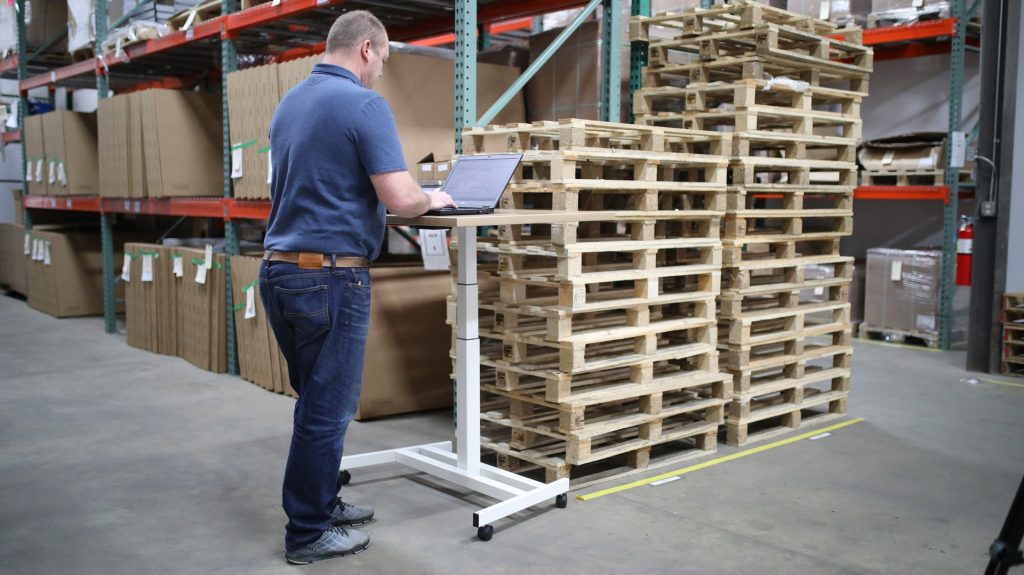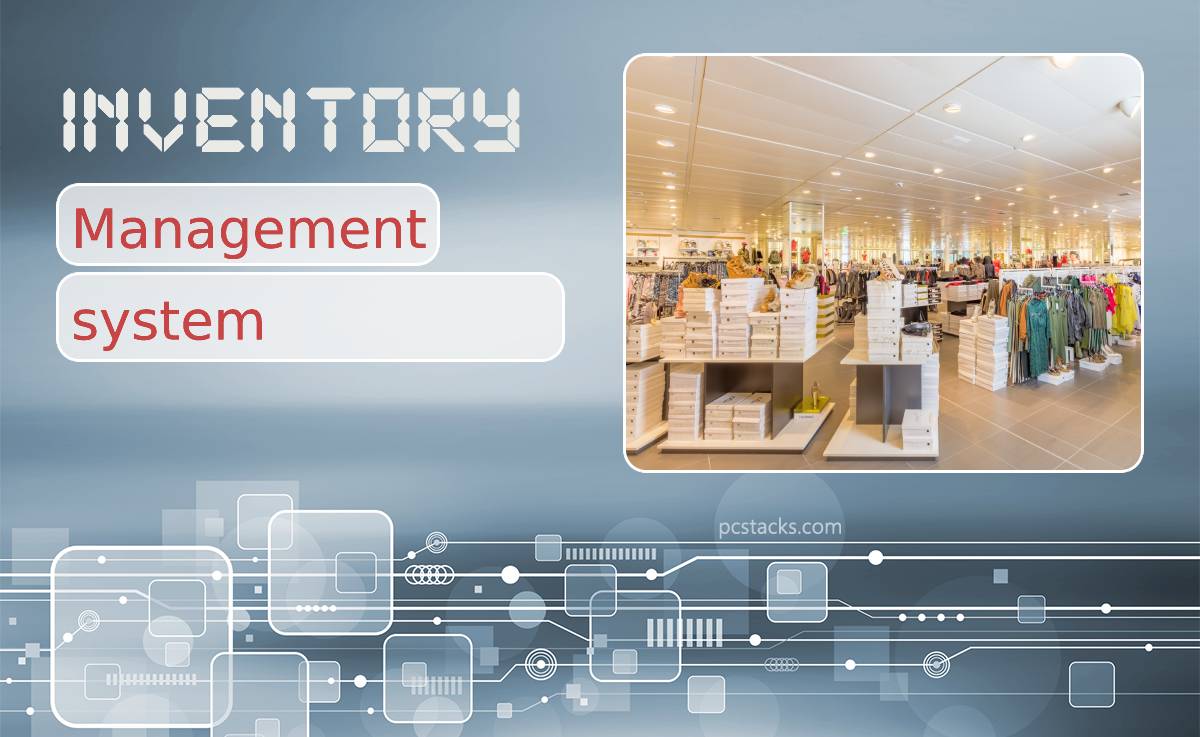Inventory management systems have come a long way from clumsy spreadsheets to cutting-edge inventory management software. To keep up with changing demands, you need to upgrade your inventory management skills constantly. 37% of all retail businesses do not have accurate inventory management.
Considering the increase in the number of warehouses, such low accuracy rates are shocking. Most small businesses struggle with effective inventory management. Sometimes they lack the necessary workforce, and sometimes a robust management framework.

Working on both aspects is essential, as an imbalance can throw your inventory data and management off track. In many ways, inventory management is now easier than ever. Modern technology makes it possible to meet all demands from the comfort of your home.
On top of that, security protocols have been strengthened to make digital retail inventory management possible. Keeping all these factors in mind, we have come up with ten crucial tips for inventory management.
Table of Contents
Top Ten Tips for Retailers to Manage Their Inventory
Our ten tips for inventory management focus on getting the basics right. If your fundamentals are in place, it will make the subsequent steps much more manageable.
As you read through the list, locate areas you are lacking and see how it can improve. Without any further ado, let’s dive right in.
1. Have a Priority Checklist for Your Inventory

It is crucial to prioritize your inventory. However, how you choose to set priorities depends on your specific needs and goals. One standard method is the ABC categorization. You label your item A, B, or C. Items under A would be high-cost, low quantity items, those under C would be low cost, high quantity items.
The rest of the items that fall between A and C would be under label B. The ABC categorization need not be watertight. You can add a fourth group (D) or decide to do it with only two groups.
The crux of the matter is to have a priority list ready. When you know which items to prioritize at what time, you will manage your inventory more effectively.
2. Lightspeed’s Inventory management
Maintaining order is just one aspect of good inventory management. There is much more to it than that. By using lightspeed’s guide on inventory management, you can make sure that everything runs well in your company and that you have enough inventory to complete your forthcoming orders. Also, you can reduce the cost of stock and boost your earnings with it.
By managing your inventory, you can prevent dead stock and overstock. The best part is that you’ll know exactly when and how much stock you’ll need to order. You can keep planning your new product while also understanding which of your previous goods did well and poorly in sales.
3. Track Your Inventory
Tracking your inventory is both essential and challenging. It becomes more complicated when you factor in the time delay between dispatch and recording. Real-time tracking is the way to go but is not practical for businesses spread across branches.
To effectively track your inventory, an automated system would be your best option. In 2021, spreadsheets are no longer an effective inventory tracking tool. You should choose something more streamlined and easy to use for all employees.
That way, you do not have to rely on a few experts to synchronize your inventory tracking. However you decide to track your inventory, you should focus on minimizing time lags and improving accuracy.
4. Assess Supplier Performance

Suppliers play a huge role in ensuring good inventory management. If your supplier is inconsistent or incompetent, it would be tough to manage the inventory. As much as you prioritize and track inventory items, it would all go in vain if your supplier fails to meet requirements and causes delivery delays.
If your supplier is not meeting your demands, you should consider making a switch. While deciding on a switch, you should also factor in any changes in cost, standard delivery time, payment systems, and more.
Replacing a supplier can be difficult, especially if it is a long-term supplier. When you know it is time to switch, do it despite all difficulties. However, not doing anything will prove very costly.
5. Handle Your Inventory Uniformly
If you do not have a uniform system for handling all aspects of your inventory, a small error can set you off track for weeks. Not just that, the possibilities of misplacing items also go high. For example, it will lead to frequent miscalculations if all warehouse employees do not follow a unified system of storing and recording new items.
All such problems will cost you both time and money. A more straightforward and more effective approach is to have a standard system and give employees basic training to stick to it. It will make operations faster, smoother, and less prone to simple human errors. It might take a little effort at first but will pay off in no time.
6. Analyze Sales Data to Discover Patterns

A big part of effective inventory management is to predict what you need and what you don’t. If predictions are not based on data, they will be more wrong than right. That’s another reason you should keep meticulous track of all sales and inventory items.
Certain items will be in high demand at particular times of the year. If you can predict this, it will save you a lot of last-minute hassle. Sometimes, it is not possible to restock at short notice. In such cases, forecasting and planning your inventory stocks is the only option.
Understanding patterns of sales data is not easy and often needs expertise. However, with time and patience, anyone can learn how to do it on a small scale, at least.
7. Optimize Inventory Management Technology
As we mentioned earlier, spreadsheets will be obsolete in 2021. They are too bulky and complicated for smooth everyday use. With modern inventory management technologies, processes are becoming much faster and simpler. They can be way more efficient and accurate than manual inventory management.
Modern software is more than capable of doing everything perfectly when it comes to retail inventory management systems. On top of that, you do not need to worry about managing every small thing personally. With specialized inventory management tools and tracking systems, these applications will make a massive difference in how you manage your inventory.
While choosing a retail inventory management system for your business, ensure it provides good technical support and ease of migrating from older systems.
8. Manage the Physical Space of Your Warehouse

While we focus primarily on inventory management data and accounting, we tend to ignore the actual physical space of our warehouses. However, not maintaining your warehouse will noticeably reduce its storage capacity and ease of operation. In a badly managed and poorly designed warehouse, simple everyday actions will become complicated and prone to errors.
You should regularly check the physical condition of your warehouses. Pay extra attention to any restrictive feature that is slowing down operations. It may seem like an unnecessary investment to physically alter parts of the warehouse; it will reflect on your inventory management performance.
9. Plan for Emergencies
With Covid-19 showing us the importance of planning for sudden disasters, many people are now aware of emergencies. That concept is as helpful in households as in inventory management systems. Any part of the supply and storage chain can suddenly halt – be it your supplier or your warehouse staff. Planning for these situations will determine how well you weather the storm.
Emergencies can be of three types broadly – financial, social, and environmental. Of these three, financial disasters are relatively easier to avoid or endure. That does not mean that you take a fatalistic stance towards social and environmental disasters.
Planning for the worst is always better than not planning at all. However, planning for emergencies is something small businesses often overlook. These businesses, unfortunately, have to pay a considerable cost when disaster strikes.
10. Be Smartphone Savvy

Smartphones have revolutionized the way we operate in our day-to-day lives. That includes how we use the technology in professional and commercial settings to get work done. With the development of modern inventory management systems, it is now easier than ever to manage your inventory from your smartphones.
Smartphone inventory management is an extension of planning for emergencies. It will not be possible to always stay connected with your computer devices. However, we tend to carry a smartphone with us all the time.
If emergency issues are addressed through smartphones, it will save a business from many potential inventory management hazards. Learning how to manage your inventory from a smartphone effectively will soon be a deciding factor in your overall sales performance.
11. Pay Attention to Security Protocols

Inventory management software is not immune to cyber-attacks and digital threats. Any inventory is subject to attacks from both external forces and internal snitches. Ensuring identification verification of people going in and out of the warehouse is also essential. We tend not to pay enough attention to inventory security, assuming that there are no immediate threats.
Often your inventory management system would have security components built-in. Apart from that, you can consider using security software that prevents cyber attacks. The component of physical protection is as essential as digital protection and ensuring both are a necessity for inventory management systems.
Conclusion
Inventory management systems have many different aspects that need your attention. From correct data analysis to modern technologies, the list of things to take care of is long.
Our tips focus on helping businesses optimize their inventory management system. Effective inventory management will go a long way in ensuring the smooth performance of your business.
Author’s Bio
Atreyee Chowdhury (LinkedIn)

Email: atreyee.c@gmail.com
Atreyee Chowdhury works full-time as a Content Manager with a Fortune 1 retail giant. She is also a freelance writer for multiple clients across multiple industries. She comes with several years of web content writing experience, and you can reach her for any content writing/copywriting requirements. She loves to read, travel, and experiment with different cuisines in her free time.




